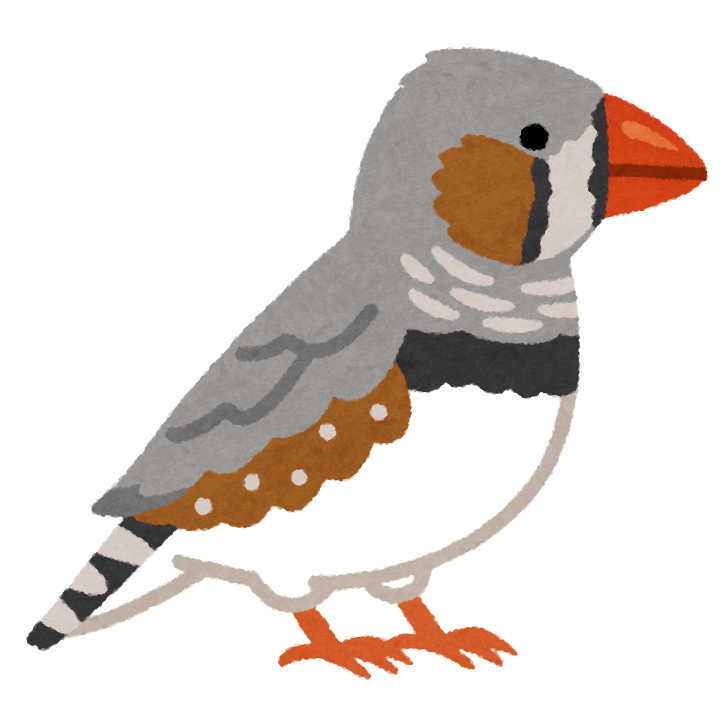1. Lu J, Holmgren A. Selenoproteins. Journal of Biological Chemistry. 2008;284(2):723-727.
2. Brown K, Arthur J. Selenium, selenoproteins and human health: a review. Public Health Nutrition. 2001;4(2b)593-599.
3. Schweizer U, Fradejas-Villar N. Why 21? The significance of selenoproteins for human health revealed by inborn errors of metabolism. The FASEB Journal. 2016;30(11):3669-3681.
4. Rayman M. Selenium and human health. The Lancet. 2012;379(9822):1256-1268.
5. Hatfield D, Tsuji P, Carlson B, Gladyshev V. Selenium and selenocysteine: roles in cancer, health, and development. Trends in Biochemical Sciences. 2014;39(3):112-120.
6. Metanis N, Hilvert D. Natural and synthetic selenoproteins. Current Opinion in Chemical Biology. 2014;22:27-34.
7. Cardoso B, Roberts B, Bush A, Hare D. Selenium, selenoproteins and neurodegenerative diseases. Metallomics. 2015;7(8):1213-1228.
8. Zebra finch (Taeniopygia guttata) longevity, ageing, and life history [Internet]. Genomics.senescence.info. 2017 [cited 30 November 2017]. Available from: http://genomics.senescence.info/species/entry.php?species=Taeniopygia_guttata
9. Spotted-sided Finch - Taeniopygia guttata - Overview - Encyclopedia of Life [Internet]. Encyclopedia of Life. 2017 [cited 30 November 2017]. Available from: http://www.eol.org/pages/1050500/overview
10. Taeniopygia guttata (zebra finch) [Internet]. Animal Diversity Web. 2017 [cited 30 November 2017]. Available from: http://animaldiversity.org/site/accounts/information/Taeniopygia_guttata.html
11. El-Wailly A. Energy Requirements for Egg-Laying and Incubation in the Zebra Finch, Taeniopygia castanotis. The Condor. 1966;68(6):582-594.
12. Mariette M, Buchanan K. Prenatal acoustic communication programs offspring for high posthatching temperatures in a songbird. Science. 2016;353(6301):812-814.
13. Labunskyy V, Hatfield D, Gladyshev V. Selenoproteins: Molecular Pathways and Physiological Roles. Physiological Reviews. 2014;94(3):739-777.
14. Lu J, Holmgren A. Selenoproteins. Journal of Biological Chemistry. 2008;284(2):723-727.
15. Squires J, Berry M. Eukaryotic selenoprotein synthesis: Mechanistic insight incorporating new factors and new functions for old factors. IUBMB Life. 2008;60(4):232-235.
16. Mariotti M, Ridge P, Zhang Y, Lobanov A, Pringle T, Guigo R et al. Composition and Evolution of the Vertebrate and Mammalian Selenoproteomes. PLoS ONE. 2012;7(3):e33066.
17. Utomo A, Jiang X, Furuta S, Yun J, Levin D, Wang Y et al. Identification of a Novel Putative Non-selenocysteine Containing Phospholipid Hydroperoxide Glutathione Peroxidase (NPGPx) Essential for Alleviating Oxidative Stress Generated from Polyunsaturated Fatty Acids in Breast Cancer Cells. Journal of Biological Chemistry. 2004;279(42):43522-43529.
18. Chiba S, Itoh Y, Sekine S, Yokoyama S. Structural Basis for the Major Role of O-Phosphoseryl-tRNA Kinase in the UGA-Specific Encoding of Selenocysteine. Molecular Cell. 2010;39(3):410-420.
19. Xu X, Mix H, Carlson B, Grabowski P, Gladyshev V, Berry M et al. Evidence for Direct Roles of Two Additional Factors, SECp43 and Soluble Liver Antigen, in the Selenoprotein Synthesis Machinery. Journal of Biological Chemistry. 2005;280(50):41568-41575.
20. Ganichkin OM, Xu XM, Carlson BA, Mix H, Hatfield DL, Gladyshev VN, Wahl MC. Structure and catalytic mechanism of eukaryotic selenocysteine synthase. J Biol Chem. 2008 Feb 29;283(9):5849-65.
21. Kasaikina M, Fomenko D, Labunskyy V, Lachke S, Qiu W, Moncaster J et al. Roles of the 15-kDa Selenoprotein (Sep15) in Redox Homeostasis and Cataract Development Revealed by the Analysis of Sep 15 Knockout Mice. Journal of Biological Chemistry. 2011;286(38):33203-33212.
22. Panee J, Stoytcheva Z, Liu W, Berry M. Selenoprotein H Is a Redox-sensing High Mobility Group Family DNA-binding Protein That Up-regulates Genes Involved in Glutathione Synthesis and Phase II Detoxification. Journal of Biological Chemistry. 2007;282(33):23759-23765.
23. Novoselov S, Kryukov G, Xu X, Carlson B, Hatfield D, Gladyshev V. Selenoprotein H Is a Nucleolar Thioredoxin-like Protein with a Unique Expression Pattern. Journal of Biological Chemistry. 2007;282(16):11960-11968.
24. V. Kryukov G, Castellano S, V. Novoselov S, V. Lobanov A, Zehtab O, Guigó R, N. Gladyshev V. Characterization of Mammalian Selenoproteomes. Science. 2003;300(6524):1439-1443.
25. Zhang Z, Liu J, Rozovsky S. Preparation of Selenocysteine-Containing Forms of Human SELENOK and SELENOS. Methods in Molecular Biology. 2017;2018(1661):241-263.
26. Castets P, Lescure A, Guicheney P, Allamand V. Selenoprotein N in skeletal muscle: from diseases to function. Journal of Molecular Medicine. 2012;90(10):1095-1107.
27. Deniziak M, Thisse C, Rederstorff M, Hindelang C, Thisse B, Lescure A. Loss of selenoprotein N function causes disruption of muscle architecture in the zebrafish embryo. Experimental Cell Research. 2007;313(1):156-167.
28. Han S, Lee B, Yim S, Gladyshev V, Lee S. Characterization of Mammalian Selenoprotein O: A Redox-Active Mitochondrial Protein. PLoS ONE. 2014;9(4):e95518.
29. Richardson D. More roles for selenoprotein P: local selenium storage and recycling protein in the brain: Figure 1. Biochemical Journal. 2005;386(2):5-7.
30. Labunskyy V, Hatfield D, Gladyshev V. Selenoproteins: Molecular Pathways and Physiological Roles. Physiological Reviews. 2014;94(3):739-777.
31. Novoselov SV, Rao M, Onoshko NV, Zhi H, Kryukov GV, Xiang Y, Weeks DP, Hatfield DL, Gladyshev VN. Selenoproteins and selenocysteine insertion system in the model plant cell system, Chlamydomonas reinhardtii. The EMBO Journal 2002;14(21):3681–3693.
32. Itoh Y, Sekine S, Matsumoto E, Akasaka R, Takemoto C, Shirouzu M et al. Structure of Selenophosphate Synthetase Essential for Selenium Incorporation into Proteins and RNAs. Journal of Molecular Biology. 2009;385(5):1456-1469.
33. Su D, Novoselov S, Sun Q, Moustafa M, Zhou Y, Oko R et al. Mammalian Selenoprotein Thioredoxin-glutathione Reductase. Journal of Biological Chemistry. 2005;280(28):26491-26498.



